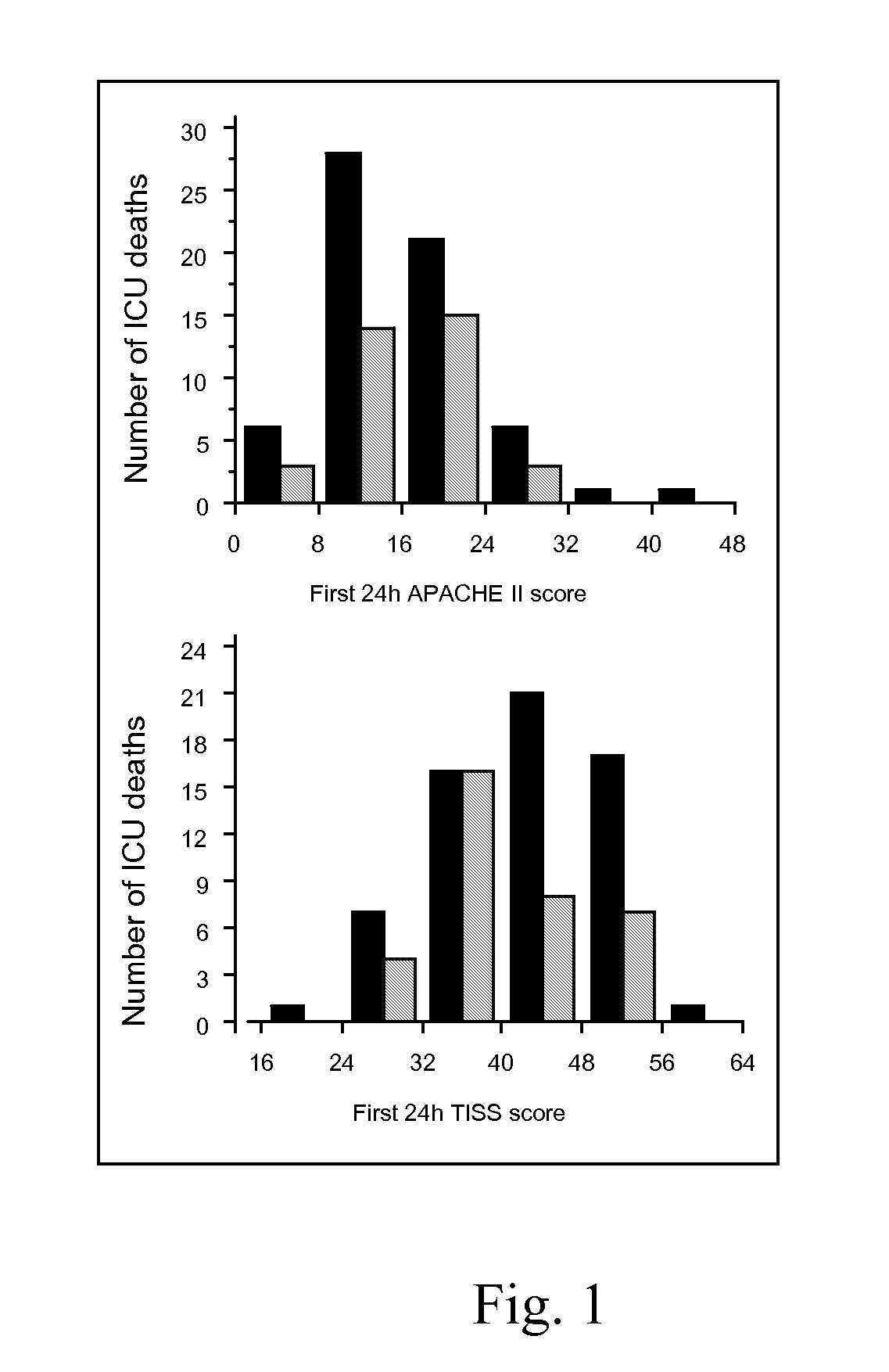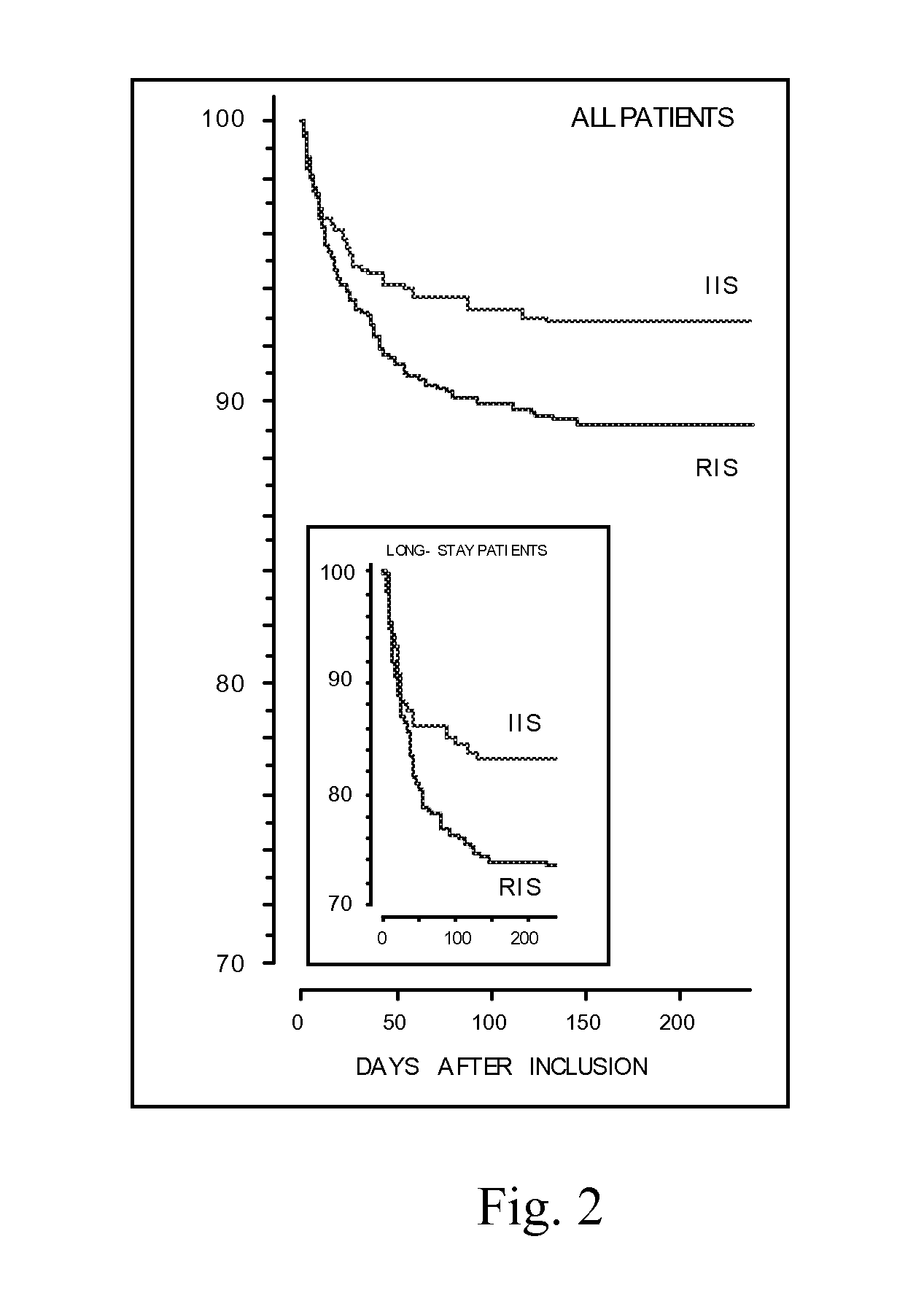Methods and preparations for curing clinically ill patients
- Summary
- Abstract
- Description
- Claims
- Application Information
AI Technical Summary
Benefits of technology
Problems solved by technology
Method used
Image
Examples
example 1
Material and Methods
[0109]In a prospective clinical study, we tested the hypothesis that the incidence of CIPNP can be reduced by more strict metabolic using intensive insulin treatment from admission onward. Between Feb. 2 and Apr. 25, 2000, 400 patients were included in the study. They had been randomly allocated to one of two insulin (Actrapid H M NovoLet of Novo Nordisk) treatment schedules:[0110](1) insulin infusion started at a dose of 1 U / h only when blood glucose is >230 mg / dL (13 mmol / L) and titrated up (2 to 4 hourly controls of blood glucose levels) with increments of 0.5 to 1 U / h to keep blood glucose below this level [180-200 mg / dL (10.3-11.2 mmol / L)]. When blood glucose levels reach 180 mg / dL, insulin infusion is stopped.[0111](2) insulin infusion started when blood glucose is >120 mg / dL (6.8 mmol / L) at a dose of 2 U / h and titrated up (2 to 4 hourly controls of blood glucose levels) with increments adequate to keep blood glucose levels normal and thus below this level ...
example 2
A Prospective, Randomized, Controlled Study was Performed
[0118]All mechanically ventilated, adult patients admitted to the intensive care unit (ICU) were eligible for inclusion. Only 5 patients participating in another trial and 9 who were moribund or DNR coded at ICU admission were excluded. At admission, patients were randomized to either strict normalization of glycemia (4.5-6.1 mmol / L) with continuously infused insulin during intensive care, the ‘intensive insulin schedule’ (IIS), or the currently used ‘restrictive insulin schedule’ (RIS), with insulin started when blood glucose exceeds 12 mmol / L in which case glycemia is clamped to 10-12 mmol / L. An interim safety analysis revealed a difference in mortality, and the study was ended for ethical reasons.
Results
[0119]A total of 1548 patients were included, 765 in the IIS group, 783 in the RIS group, well matched at inclusion. IIS reduced ICU mortality by 43% (P=0.005) [63 deaths in the RIS group versus 35 in the IIS group; death od...
PUM
| Property | Measurement | Unit |
|---|---|---|
| Time | aaaaa | aaaaa |
| Density | aaaaa | aaaaa |
| Density | aaaaa | aaaaa |
Abstract
Description
Claims
Application Information
 Login to View More
Login to View More - R&D
- Intellectual Property
- Life Sciences
- Materials
- Tech Scout
- Unparalleled Data Quality
- Higher Quality Content
- 60% Fewer Hallucinations
Browse by: Latest US Patents, China's latest patents, Technical Efficacy Thesaurus, Application Domain, Technology Topic, Popular Technical Reports.
© 2025 PatSnap. All rights reserved.Legal|Privacy policy|Modern Slavery Act Transparency Statement|Sitemap|About US| Contact US: help@patsnap.com



